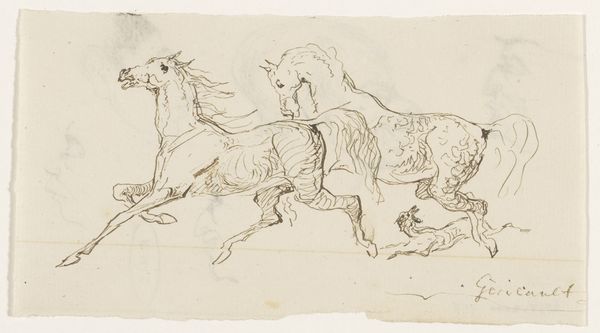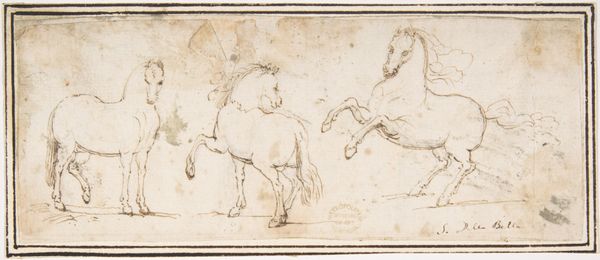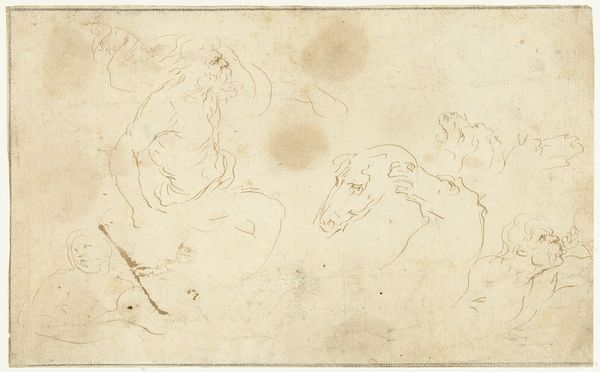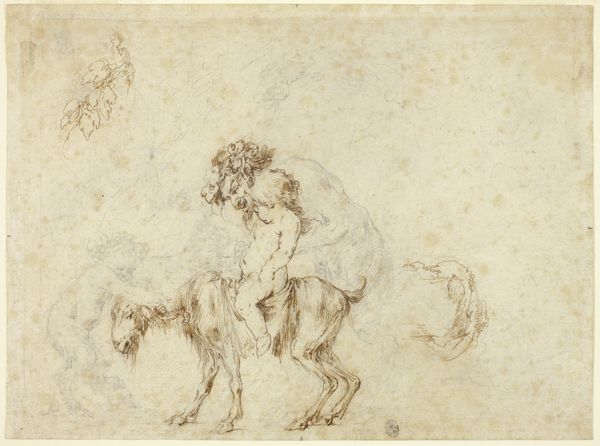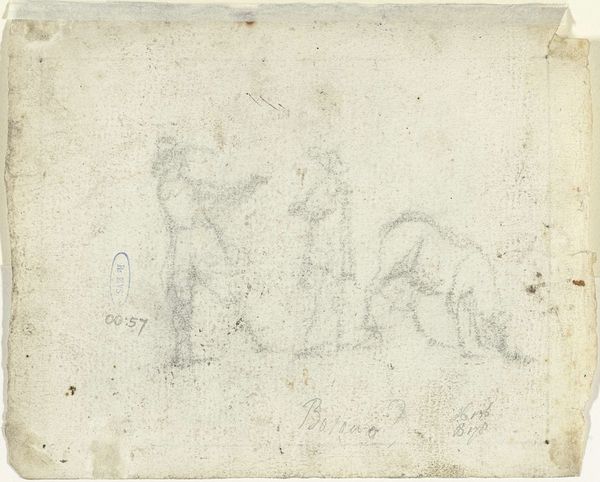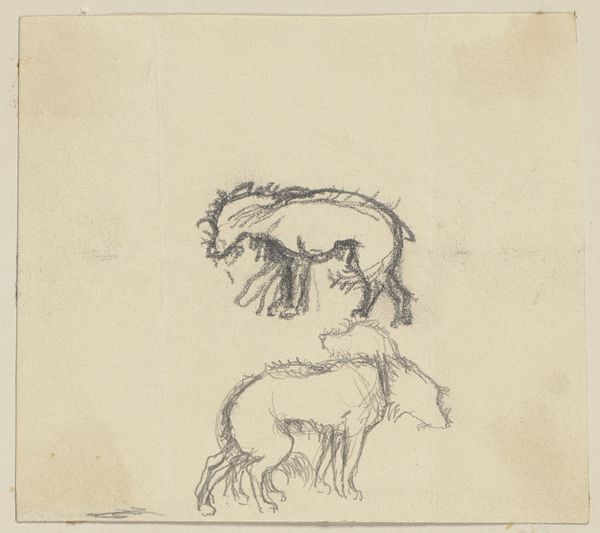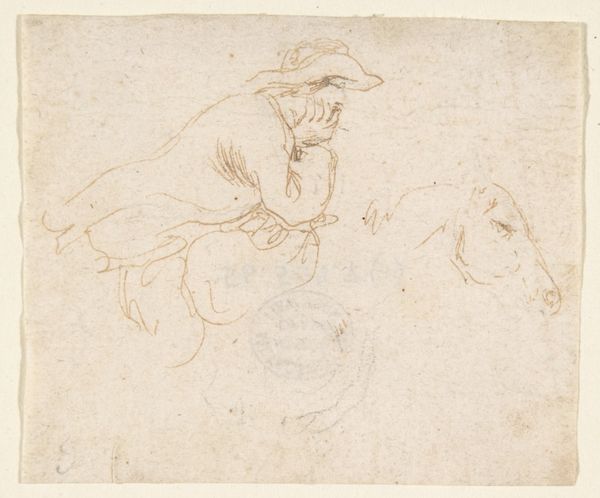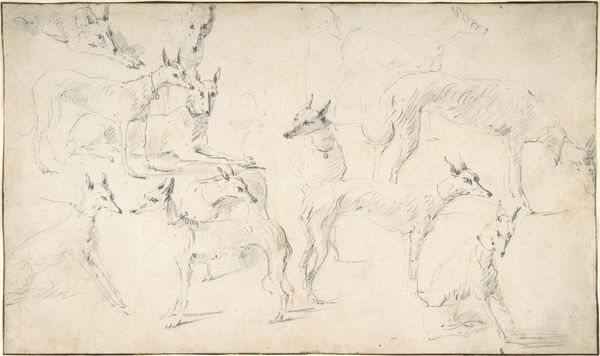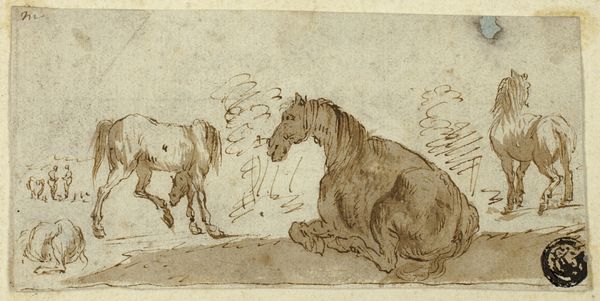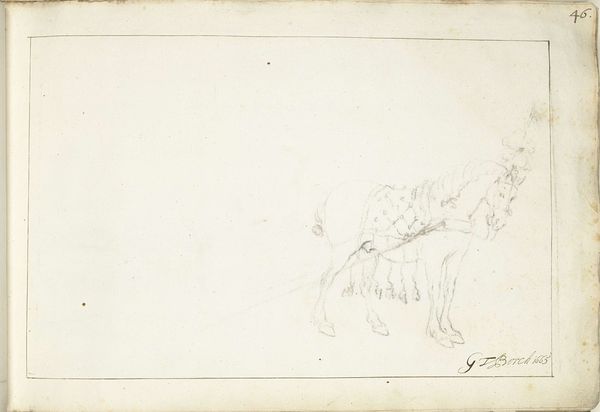
drawing, ink
#
drawing
#
classical-realism
#
ink
Dimensions: overall (approximate): 13.4 x 18.3 cm (5 1/4 x 7 3/16 in.)
Copyright: National Gallery of Art: CC0 1.0
Curator: We are looking at "Musician and Dancing Figures," an ink drawing in a style that evokes classical realism, created by Donato Creti. Editor: My first thought? Whimsical! It feels light, airy. Like a daydream captured with a pen. It has a certain joyful quality despite being a simple drawing. Curator: It's fascinating to consider this within its historical context. Drawings like these served as preparatory studies, revealing the artist's process. Considering the period, classical allusions were, of course, heavily laden with social and political meaning, subtly reinforcing prevailing notions of power and beauty. Editor: You know, for me, it's less about power and more about... fleeting moments. Look at the movement he's captured. You can almost hear the music and feel the rhythm. And the seemingly effortless quality of the line! It's as if he barely touched the page. Do you feel the figures are gendered in any distinct way, even if sketched only so delicately? Curator: It's fair to read some intended gender differentiation here, even in these nascent forms. The musician and at least one of the other foregrounded figures seem coded toward hegemonic masculine ideals. That could be telling, considering patronage and expected social scripts during that period. How subversive, if at all, was Creti’s gaze? What norms was he reinforcing or quietly questioning? Editor: Oh, you always bring it back to power structures! Which I respect, but honestly, looking at it now I’m thinking maybe it’s more timeless. About humanity's impulse to create, to move, to celebrate… perhaps even just figures standing for art's necessity in and for itself. It all boils down to something truly fundamental and good. Curator: I see your point. And perhaps it’s both/and. Creti creates this almost ethereal scene while engaging—perhaps unconsciously—with the prevailing ideologies of his time. And we, in our time, can find those echoes and analyze them. The very act of interpretation can itself be a powerful means of social critique. Editor: Exactly! And that, my friend, is why art remains perpetually relevant and ever intriguing. We bring ourselves to it and allow it to open new avenues of inquiry into meaning itself, and what meaning offers us. Curator: Well said. Art as a conduit for challenging ourselves, and our understanding of the world around us.
Comments
No comments
Be the first to comment and join the conversation on the ultimate creative platform.
